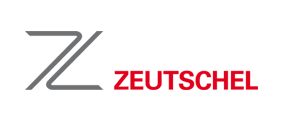June 2017 - "We close the gap between scanning and photo studio applications"
Zeutschel ScanStudio – for overheads and transparencies

Advertised as the all-in-one system for library digitization workflows, Zeutschel presented its innovative ScanStudio at this year’s CeBIT and German Library Congress in Frankfurt. We spoke with Joerg Vogler, President of Zeutschel, about what makes the product special, how customers benefit, and why a holistic appreciation of the costs is so important.
What prompted Zeutschel to develop the ScanStudio?
Joerg Vogler: The trend toward digitizing cultural assets has now spread to originals that until now had remained somewhat marginal. I could mention slides, glass plate negatives and films, as well as materials with a metallic surface, like coins. Current reprographic cameras are limited in their productivity, simple reproduction of high-quality results, and ease of use. In turn, our high-performance scanners cannot be used to digitize transparencies. This system closes the gap between scanner and photo studio applications, while offering the best of two worlds.
How did you put this claim into practice?
Joerg Vogler: ScanStudio combines a latest-generation camera system and ErgoLED lighting with a number of functionalities like process efficiency, reliable results and simple operation. This caters to many different scanning scenarios for overhead and transparency applications that enable quick and convenient work. What's more, the system is controlled by Zeutschel's OmniScan software, which has proven effective in digitization workflows. The software includes preconfigured scan settings and other features. Once they are activated, the camera travels automatically to the right position, and the user receives precise instructions on how to adjust the lighting.
Can you flesh out how this will improve productivity?
Joerg Vogler: I'd say that standard professional film scanners take five to seven minutes to digitize medium formats in a resolution of 2,400, i.e. 4,000 dpi. The Zeutschel ScanStudio will usually need just 50 milliseconds for the same task.
What flexibility does the ScanStudio give users?
Joerg Vogler: The system philosophy is central to the ScanStudio. It is expressed in the interchangeable lenses and the various accessory modules for the scanning and transparency table, including suitable format holders for slides, glass plate negatives or films, as well as an A2 book cradle with or without a glass plate, and even a copyboard table for A1 formats. The system is also engineered to accommodate innovative developments in digital backs. You simply cannot be better prepared for the future!
What level of image quality can libraries expect?
Joerg Vogler: Zeutschel ScanStudio's image quality exceeds the maximum requirements of the digitization guidelines outlined in FADGI, Metamorfoze and ISO 19264-1. This result is ensured by the latest state-of-the-art digital backs by PhaseOne and the flexibly adjustable and configurable ErgoLED lighting, which enables shadowless and glare-free illumination of a book's gutter or the surface of a coin.
What made you pick PhaseOne as your partner?
Joerg Vogler: PhaseOne was the natural choice for Zeutschel, as the company clearly leads the market in terms of quality. Our cooperation was very productive from the beginning. We managed to overcome technical challenges quickly and collaboratively. Overall, we are extremely proud that it only took a year from an agreed concept to the presentation of the first prototypes at the CeBIT.
Quality comes at a price, no doubt? Might that be a competitive disadvantage in a period of budget austerity?
Joerg Vogler: The seemingly high price quickly looks a lot lower if you consider the immense benefits that customers acquire as well. Small formats requiring high resolutions, large formats or transparencies, as well as applications needing variable light guidance: We accommodate all these needs in just one device, while achieving a far higher throughput compared to other reprographic systems. In addition, ScanStudio buyers acquire a system that will cope safely and productively with current and future digitization tasks. A conservative calculation is that each scan will cost just a couple of cents for an outstanding, standardized image quality.
When will the ScanStudio launch?
Joerg Vogler: Series production ramp-up is already happening. We expect to deliver the first devices to customers between late June and early July.
